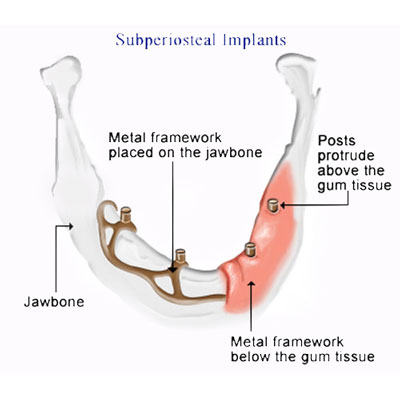Many manufacturing companies produce dental implants and materials used in restorations such as crown and abutment.
That's why dentists have different choices for choosing the right dental implant treatment for you.
Dental implants are classified according to the shape, position or method used for placement (one-stage or two-stage).
The shape of the sub-periosteule implant:
A metal scaffold is placed on the jaw bone and the gum cover it, only posts remain outside the gum to hold crown and abutment.
This implant is placed inside the gum tissue on the jaw bone. The post extends from the gum to maintain restoration (crown or abutment).The main advantage of this type of implant is that it can hold tight dentures for people with insufficient bone height.
Endosteal implants
the shape of endosteal implants:
Implants fall inside the jaw bone and attach it firmly.
These dental implants are commonly used for two-stage operations.This implant is inserte surgically directly into the jaw bone and replace bridges or moving teeth.As shown in the figure, these implants have several types, including screw / threaded, cylindrical / flat and blade.




